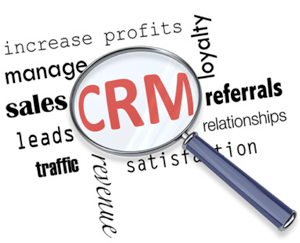Lapsed Customers –
Six reasons to keep them on your radar
Six reasons to keep them on your radar

Key finding #1 – Many organisations have no idea how many customers they are losing each year … and it is probably more than they realise:
Close to 50% of Marketing Managers and 30% of Sales Managers could not identify their company’s percentage of annual customer loss. Those who thought they knew their firm’s defection rates believed that it averaged about 7-8% per year. However research shows that the average firm loses between 20 to 40% of its customers per year.
Source: Customer Winback: How to Recapture Lost Customers – And Keep Them Loyal By Jill Griffin & Michael W. Lowenstein, February, 2001
What is your annual percentage of customer loss? If it was between 20% to 40% of your customer base, as the research suggests, what would this be doing to your bottom line?
The average firm loses between 20 to 40% of its customers per year. Click To TweetKey finding #2 – Lapsed customers make for better prospects:
All is not lost. If your percentage customer loss is higher than you’d like don’t despair. A study by Marketing Metrics has found firms have a much better chance of winning business from lost customers than from new prospects. The research found the average firm has a 20 to 40 percent probability of successfully selling to lost customers, and only a 5 to 20 percent probability of making a successful sale to brand new prospects. Bottom line – customer win back can bring big rewards. The important thing here is to understand why your customers left in the first place. Armed with this information in many cases you can rectify the problem and win them back.
Source: Jill Griffin– The Loyalty Maker 2009 – 2011 (http://www.loyaltysolutions.com/winback-faq/)
Key finding #3 – The majority (96%) of Customers won’t tell you why they stopped buying … unless you ask:
Research shows that for every customer who bothers to complain, there are 26 others who remain silent.
Source: Direct Selling Educational Foundation. “Customers Mean Business… Survey Shows You Have More Dissatisfied Customers than You Think.” 1982.
Further research by Technical Assistance research Programs has found that an upset customer tells an average of eleven people about an unhappy experience and that those eleven people tell five others.
Source: Customer Winback- How to Recapture Lost Customers – And Keep them Loyal Written By Jill Griffin & Michael W. Lowenstein Feb 2001
So learning why a customer has left is not just about winning them back … it is about protecting your brand reputation too.
For every customer who bothers to complain, there are 26 others who remain silent. Click To TweetKey finding #4 – New customers are rarely as profitable as long-term customers:
And if you are worried about ‘wasting time’ on customers who have left remember this: New customers typically cost a firm money in the beginning whereas long term customers are typically far more profitable. As such, the economic consequences of losing mature customers and replacing them with new ones, is not neutral. Furthermore, research has shown that individual customer profitability increases over the life of a retained customer.
Source: The Loyalty Effect, By Frederick F Reicheld, 1996, Harvard Business School Press. Chapter 2 – The Economics of Customer Loyalty
Key finding #5 – Customer win back initiatives ARE worth the effort:
If you believe that your efforts on winning back customers may not be worthwhile, think about this: 82-95% of unhappy customers will come back if impressed with your win back efforts and performed in a timely fashion. Furthermore, those customers will go on to refer, on average, five new customers.
Source: US Department of Consumer Affairs
Key finding #6 – Lowering customer defection rates has a massive impact on your profit:
A 5% reduction in customer defection rate can increase profits by 25-125%, depending on the industry. Or put another way, a 2% increase in customer retention has the same effect as decreasing costs by 10%.
Source: The Loyalty Effect, By Frederick F Reicheld, 1996, Harvard Business School Press. Chapter 2 – The Economics of Customer Loyalty
A 5% reduction in customer defection rate can raise profits by 25-125%, based on the industry. Click To Tweet
Lapsed customer surveys can be a great place to start to understand the drivers for your customer’s decisions to defect. This insight can then form the basis for testing targeted ‘win back’ offers and strategies that can deliver a massive return on investment. Take the following example from Harvard Business Review:

Why not have a look at PeoplePulse today?
Contact PeoplePulse today on ph +61 2 9232 0172 to discuss how we may be able to help you set up an effective lasped customer survey for your business.
Or if you are interested in a demonstration of full featured online survey software offered by a full service provider, please request a demo.
Next Articles:
NPS – Net Promoter Score®: The Complete Guide – The ultimate resource for understanding Net Promoter Score (NPS) including tips, statistics, research, infographics and videos
The Case for a Staff Skills Audit – Understanding today, so you can plan for tomorrow.
Net Promoter, Net Promoter System, Net Promoter Score, NPS and the NPS-related emoticons are registered trademarks of Bain & Company, Inc., Fred Reichheld and Satmetrix Systems, Inc.

 Exceptional Survey. Solutions
Exceptional Survey. Solutions